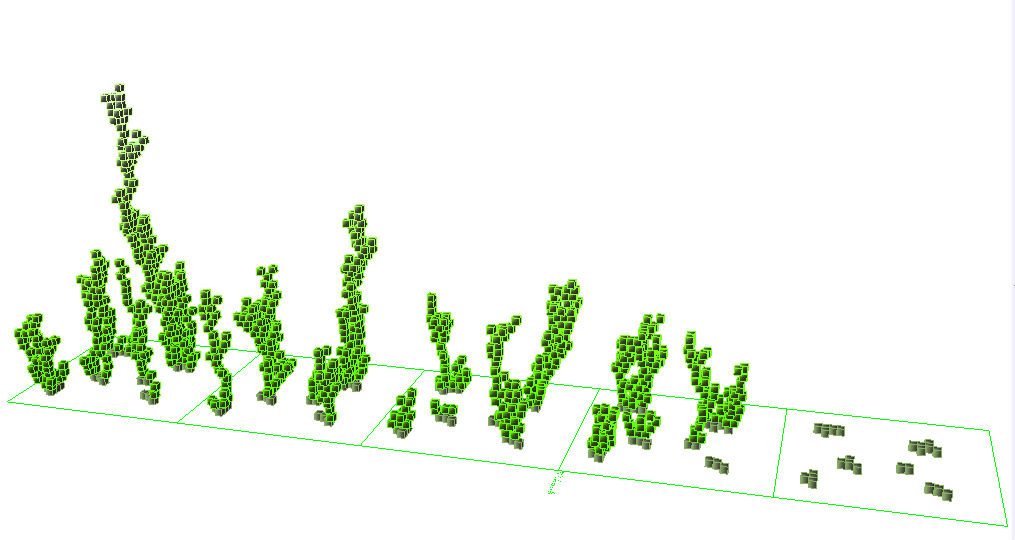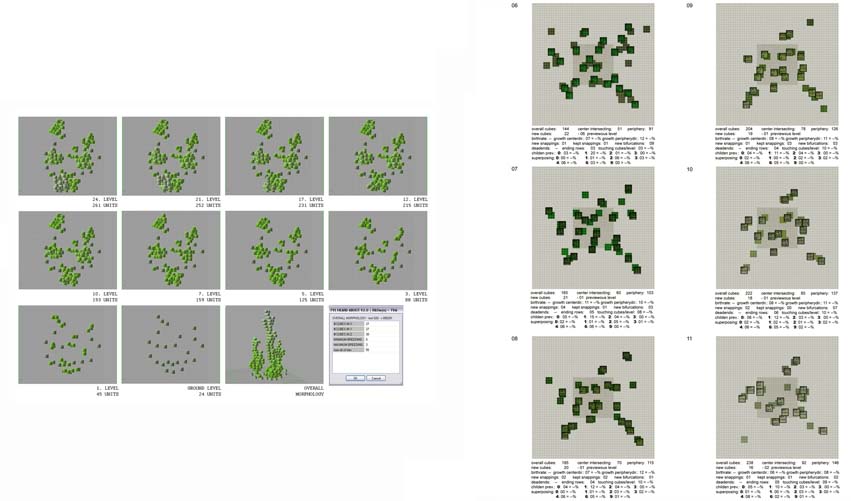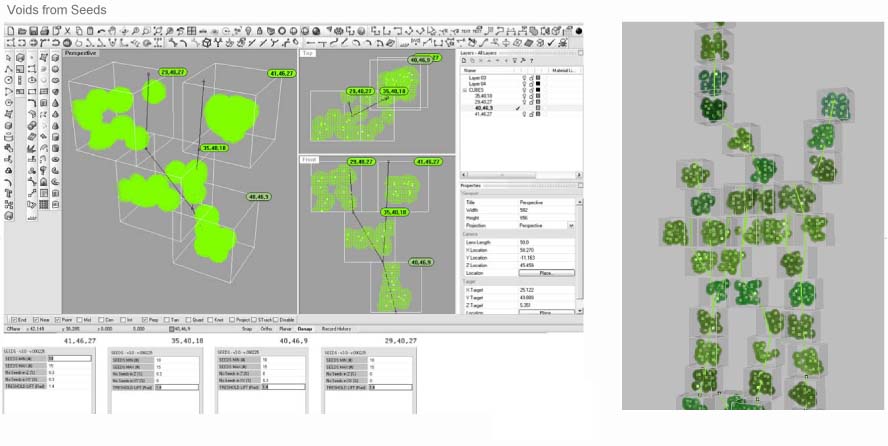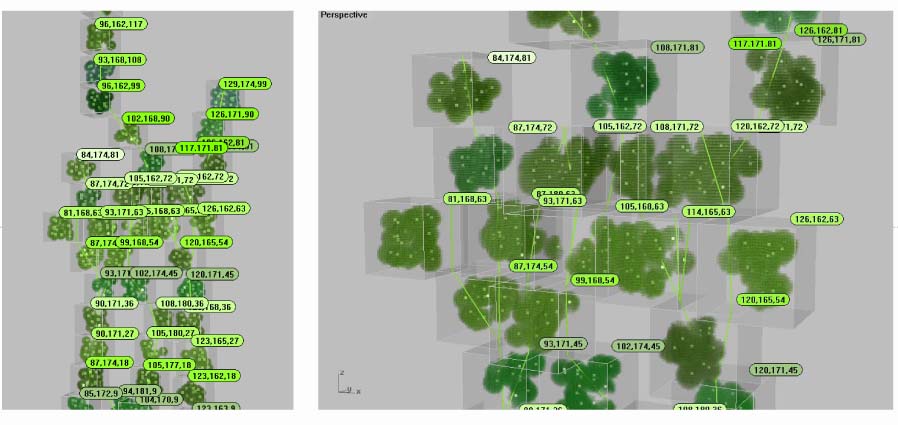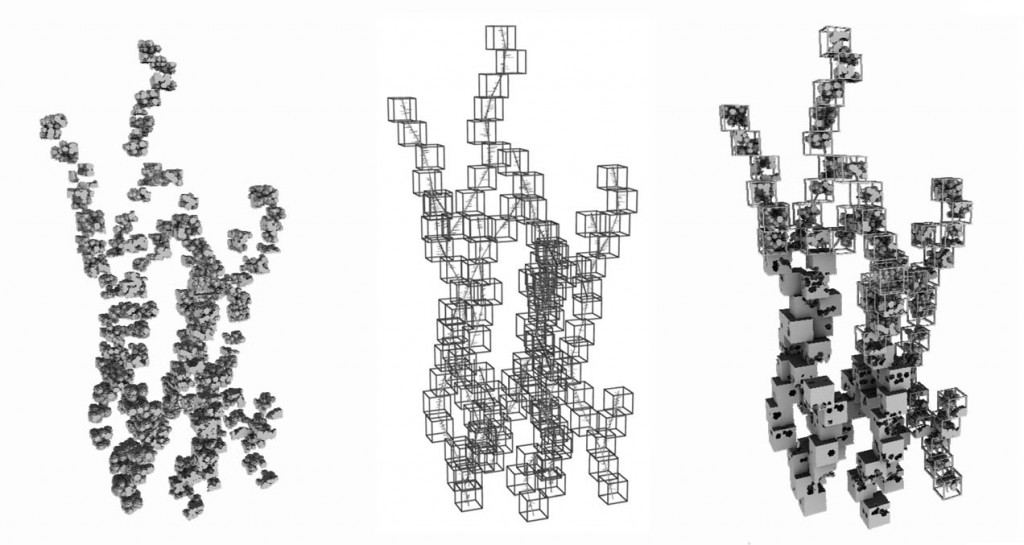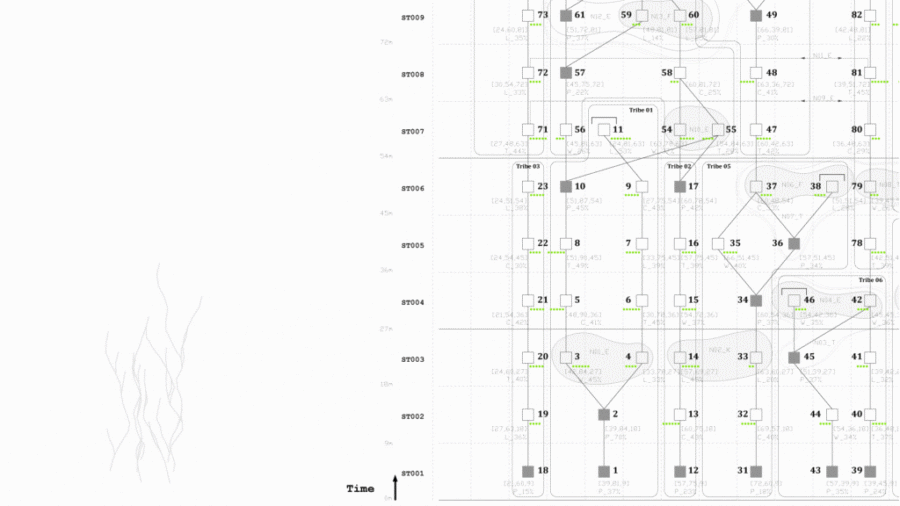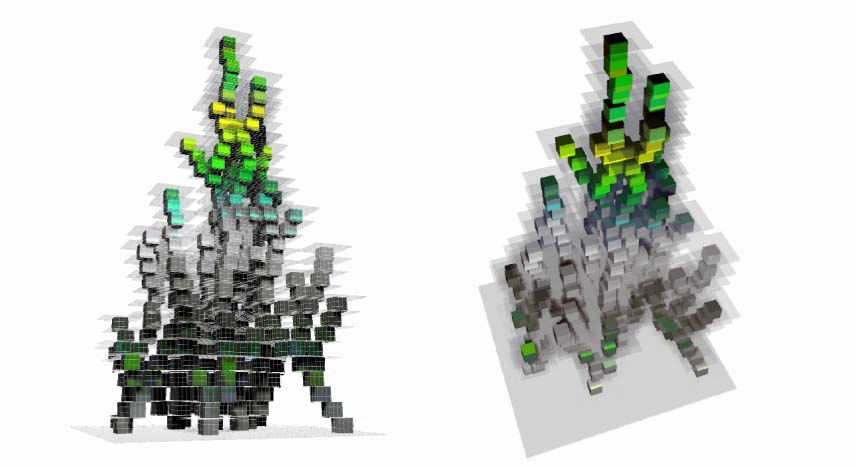From physio-morphological computation to the multitude
A multitude of aggregations of physio-morphological layouts is organized according to parameters of chronological positioning and variable distances between the entities (collective, tribal, human clusters or conversely singleton units). This includes public layouts and micro-places.
Assemblage
An assemblage…like a multiplicity that contains many heterogeneous ends
and establishes links, relationships of different kinds. The only thing holding the assemblage together is co-functioning, or in other words symbiosis, “sympathy” in the original sense. What matters are not filiations but alliances and alloys, not inheritance and descent but contagion and epidemics…An assemblage comprises two segments, one of content and the other of expression. On the one hand it is a mechanical assemblage of bodies, of actions and passions, an intermingling of bodies reacting to one another, on the other hand it is a collective assemblage of enunciation, of acts and statements, of incorporeal transformations attributed to bodies. Then on a vertical axis, the assemblage has both territorial sides, or reterritorialized sides, which stabilize it, and cutting edges of deterritorialization, which carry it away.
Gilles Deleuze & Felix Guattari
Strategies for binding heterogeneous morphologies and occupation chronologies (bottom up)
-Position and definition of each cell based on the interweaving of four “family” morphologies .
-Position and definition of the relationship between cells based on five proximity modules [neighborhood morphologies].
-Definition of public areas: strategically located on the Y axis of contact between the vertical layouts. Their boundaries are indistinctly defined (fuzzy logic) so that these areas can expand and contract.
Morphologies
-Precision and definition of the multitude generated by the addition of each inhabitable morphology:
their singularity, position and the timeline for their agglomeration (by unit, tribe, etc.).
-Precision of the relational nodes and tree structures (public areas and distribution areas).
-Colonisation / chronologies / datas per unit / per neighbourhood / per tribes
